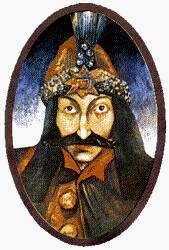Dracula history
Dracula was born in 1431 in the Transylvanian city of Sighisoara (old roman Castrum Rex).
At that time Dracula's father, Vlad II Dracul, was living in exile in Transylvania. The house where Dracula was born is still standing in the citadel of Sighisoara.
(Vlad the Impaler - Journal of the Dark)
Vlad became quite known for his brutal punishment techniques. He often ordered people to be skinned, boiled, decapitated, blinded, strangled, hanged, burned, roasted, hacked, nailed, buried alive, stabbed, etc. He also liked to cut off noses, ears, sexual organs and limbs.
But his favorite method was impalement on stakes, hence the surname "Tepes" which means "The Impaler" in the Romanian language.
Even the Turks referred to him as "Kaziglu Bey," meaning "The Impaler Prince." It is this technique he used in 1457, 1459 and 1460 against Transylvanian merchants who had ignored his trade laws.
The raids he led against the German Saxons of Transylvania were also acts of proto-nationalism in order to protect and favour the Wallachian commerce activities.
We will be always happy to assist you with your travel plans all over Romania and any travel information about Dracula tours.




